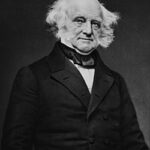The Democratic Transition
Martin Van Buren’s presidency began with a remarkable achievement in American political history. He became the first president to succeed his political mentor through democratic election rather than dynastic succession. This peaceful transfer embodied the core principles of Jacksonian Democracy that emphasized popular sovereignty and democratic participation. 📊 The 1836 election demonstrated that American institutions could handle transitions between strong political personalities.
Constitutional Governance Under Van Buren
Van Buren immediately established his commitment to constitutional limits on presidential power. Unlike his predecessor’s more assertive approach, he respected congressional authority and judicial independence. He maintained Jackson’s democratic reforms while moderating the presidency’s role. This balanced approach proved that Jacksonian Democracy could evolve without abandoning its foundational principles.
Institutional Precedents
Perhaps most significantly, Van Buren established that the presidency was larger than any individual leader. ⚠️ He faced the Panic of 1837 without abandoning democratic processes or seizing emergency powers. His restraint during economic crisis demonstrated institutional stability. These precedents would guide future presidents during national emergencies and political transitions.
Impact:
Strengthening Democratic Institutions
Van Buren’s presidency fundamentally strengthened American democratic institutions through successful political transition. His election proved that Jacksonian Democracy could survive beyond Jackson himself. The peaceful transfer of power established crucial precedents for future administrations. 🌍 International observers noted America’s unique ability to change leadership without violence or constitutional crisis.
Long-term Constitutional Effects
The Van Buren presidency created lasting constitutional precedents regarding presidential restraint during crises. His response to the Panic of 1837 established that presidents should work within existing institutions rather than expand executive power. 📉 While the economic downturn was politically damaging, his constitutional approach preserved democratic governance. Future presidents would reference his example during their own national emergencies.
Political Party Development
Van Buren’s continuation of Jacksonian Democracy helped solidify the modern American two-party system. His presidency demonstrated how political movements could transcend individual leaders. The Democratic Party’s institutional survival under his leadership created stability in American politics. 🔥 This party continuity would prove essential during later sectional crises, providing organized opposition to emerging threats to democratic governance and helping maintain national political dialogue.
